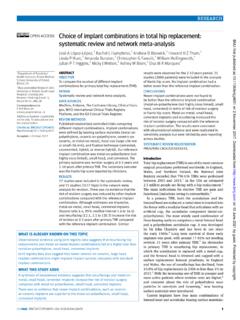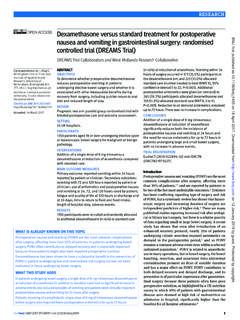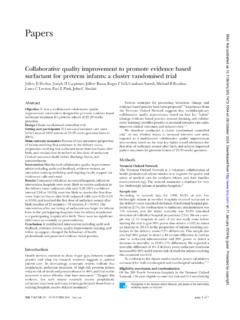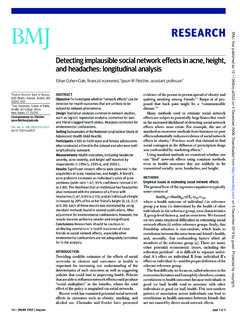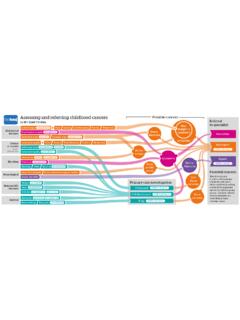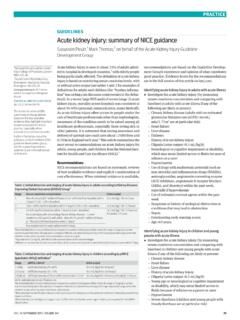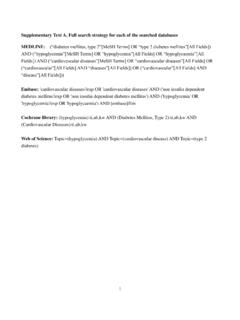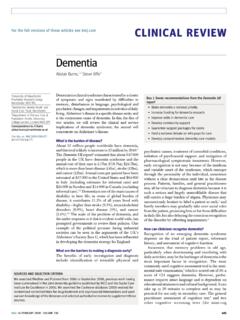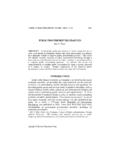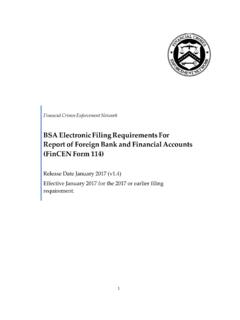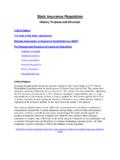Transcription of Prevalence of diabetes recorded in mainland China using ...
1 The bmj | BMJ 2020;369:m997 | doi: 1 RESEARCHP revalence of diabetes recorded in mainland China using 2018 diagnostic criteria from the american diabetes Association: national cross sectional studyYongze Li,1 Di Teng,1 Xiaoguang Shi,1 Guijun Qin,2 Yingfen Qin,3 Huibiao Quan,4 Bingyin Shi,5 Hui Sun,6 Jianming Ba,7 Bing Chen,8 Jianling Du,9 Lanjie He,10 Xiaoyang Lai,11 Yanbo Li,12 Haiyi Chi,13 Eryuan Liao,14 Chao Liu,15 Libin Liu,16 Xulei Tang,17 Nanwei Tong,18 Guixia Wang,19 Jin-an Zhang,20 Youmin Wang,21 Yuanming Xue,22 Li Yan,23 Jing Yang,24 Lihui Yang,25 Yongli Yao,26 Zhen Ye,27 Qiao Zhang,28 Lihui Zhang,29 Jun Zhu,30 Mei Zhu,31 Guang Ning,32 Yiming Mu,7 Jiajun Zhao,33 Weiping Teng,1 Zhongyan Shan1 AbstrActObjectiveTo assess the Prevalence of diabetes and its risk based, cross sectional provinces in mainland China with nationally representative cross sectional data from 2015 to 880 participants aged 18 and older a nationally representative sample of the mainland Chinese OutcOMe MeasuresPrevalence of diabetes among adults living in China , and the Prevalence by sex, regions, and ethnic groups, estimated by the 2018 american diabetes Association (ADA) and the World Health Organization diagnostic criteria.
2 Demographic characteristics, lifestyle, and history of disease were recorded by participants on a questionnaire. Anthropometric and clinical assessments were made of serum concentrations of fasting plasma glucose (one measurement), two hour plasma glucose, and glycated haemoglobin (HbA1c).resultsThe weighted Prevalence of total diabetes (n=9772), self-reported diabetes (n=4464), newly diagnosed diabetes (n=5308), and prediabetes (n=27 230) diagnosed by the ADA criteria were (95% confidence interval to ), ( to ), ( to ), and ( to ), respectively, among adults living in China . The weighted Prevalence of total diabetes was higher among adults aged 50 and older and among men. The Prevalence of total diabetes in 31 provinces ranged from in Guizhou to in Inner Mongolia. Han ethnicity had the highest Prevalence of diabetes ( ) and Hui ethnicity had the lowest ( ) among five investigated ethnicities.
3 The weighted Prevalence of total diabetes (n=8385) using the WHO criteria was (95% confidence interval to ).cOnclusiOnThe Prevalence of diabetes has increased slightly from 2007 to 2017 among adults living in China . The findings indicate that diabetes is an important public health problem in is a metabolic disorder caused by genetic and environmental factors, which results in insulin insensitivity, insulin deficiency, and impaired bio logical function. The disease has become a critical health concern worldwide owing to its high Prevalence and related disability and 2 The Prevalence and number of adults with diabetes has increased at a greater rate in low and middle income countries than in high income countries. This rise in Prevalence has been compounded by a growing and ageing population, nearly quadrupling the number of adults with diabetes from 1980 to 2014 The increase in Prevalence could also be partially attributable to the new diagnostic criteria, with reduced cut off points for blood glucose and the addition of glycated haemoglobin (HbA1c).
4 The american diabetes Association (ADA) criteria and World Health Organization (WHO) criteria are shown in table 1. The main difference between them is the inclusion of HbA1c in the ADA 5 For numbered affiliations see end of the to: W Teng (ORCID 0000-0002-6445-6192)Additional material is published online only. To view please visit the journal this as: BMJ 2020;369:m997 : 3 March 2020 WhAt Is AlreAdy knoWn on thIs topIcThe previous national survey of diabetes in China , conducted in 2013, found a diabetes Prevalence of and a prediabetes Prevalence of using the american diabetes Association (ADA) diagnostic criteriaIn 2013, China implemented major healthcare reform and several government prevention, screening, and management programmes for non-communicable diseases, which provided useful data to show whether these changes have affected the Prevalence of diabetesSuch surveys generally use a single reading of glucose or HbA1c, rather than repeat readings which are typical in clinical practice.
5 Where clinical diagnosis is based also on patient symptomsWhAt thIs study AddsThis nationally representative epidemiological survey indicated that the overall Prevalence of diabetes in mainland China in 2017 was using the ADA diagnostic criteria and using World Health Organization criteriaThe Prevalence of diabetes in 2017 in China is higher than that found by previous national surveys in 2007, 2010, and 2013 using the same WHO diagnostic criteriaThe findings suggest that diabetes is an important health problem in China on 8 March 2023 by guest. Protected by : first published as on 28 April 2020. Downloaded from RESEARCH2 doi: | BMJ 2020;369:m997 | the bmjRapid economic development in the past three decades has led to a change in lifestyle among the Chinese population, with more sedentary behaviour and a high energy/high fat This change has resulted in more people who are The Prevalence of diabetes in adults living in China increased from using the WHO criteria in 1980 to using the ADA criteria in 14 Although different sampling methods and screening procedures were used between 1980 and 2013, these data show a remarkable increase.
6 According to the diabetes atlas of the International diabetes Federation, China has the largest number of patients with diabetes in the world. Estimates suggest that there are million adults with diabetes living in China , accounting for 24% globally of patients with Additionally, the healthcare cost associated with diabetes in China is 110 billion international dollars (purchasing power parity) in implemented healthcare reforms in As a result, patients with non communicable diseases, including diabetes , could have easier access to clinical resources, thus improving the control of diabetes . Some areas have carried out a whole population project with prevention, screening, diagnosis, and management of diabetes and other non communicable diseases.
7 Prevention and treatment of diabetes has moved from large general hospitals to community health service centres, from simple clinical treatment to tertiary prevention of diabetes , and from simple control of blood glucose to control of weight, blood glucose, blood pressure, and blood objective was to perform a cross sectional study of the Prevalence of diabetes and prediabetes in mainland China , and to evaluate awareness, treatment, and control of diabetes by geographical location and and study populationThis epidemiological study, the Thyroid disorders, Iodine status and diabetes Epidemiological survey (TIDE study), included all 31 provinces of mainland China with a sample of 75 880 people according to the age and sex composition of each community and the urban rural ratio using the latest national census The study was conducted between 2015 and used a multistage, stratified sampling method to select a nationally representative sample of people aged 18 and older in the general population.
8 The study was conducted through four stages of random sampling in urban and rural locations in parallel (supplementary fig 1). Developed, developing, and underdeveloped cities were defined based on gross domestic product per capita, concentration of commercial resources, the extent to which a city serves as a commercial hub, vitality of residents, diversity of lifestyle, and future growth potential. Six tiers of cities were categorised from developed to underdeveloped cities, each two tiers being defined as a rank and thus three ranks in all. The cities with tier 1 and new tier 1 were classified as developed cities, tiers 2 and 3 as developing cities, and tiers 4 and tier 5 as underdeveloped cities (supplementary table 1).
9 For urban locations, at the first stage, one city was selected from each province from all 31 provinces of China . These 31 cities were classified as 10 developed, 13 developing, and 8 underdeveloped cities. At the second stage, one district was randomly selected from each city. At the third stage, two residential communities were randomly selected from each district. At the final stage, eligible people who met the inclusion criteria and were registered as local residents were randomly selected and stratified by age and sex. The composition of age and sex of each community and urban rural ratio were decided based on China s 2010 national census Parallel random sampling was performed in rural locations (supplementary fig 1).
10 For adult respondents, the inclusion criteria were age 18 or older, living in the selected community for at least five years, and not pregnant. At least 1000 people from each ethnic minority were recruited in four autonomous regions. Finally, Tibetan, Uyghur, Hui, and Zhuang ethnic groups were analysed. A total of 80 937 participants completed the survey and the overall response rate was Our analysis included 75 880 participants after excluding 5057 people with missing information on sex, age, plasma glucose, or HbA1c (supplementary fig 1). Research protocols were approved by the medical ethics committee of China Medical University. All participants provided written informed consent after receiving a thorough explanation of the research and behavioural assessmentFor each participant, a trained interviewer used a detailed questionnaire to collect information about demographic variables, behavioural factors, family history of chronic diseases, and personal medical history.


